Endometritis is the inflammation of the uterine mucosa. The most common disease occurs in women of reproductive age. It is not surprising that the menstrual period with the endometrium is a kind of indicator of ill health. After all, it touches precisely the organ that is replaced in the process of menstruation. Other symptoms of the disease are similar to other ailments, which makes diagnosis difficult.
Gamerendometritis
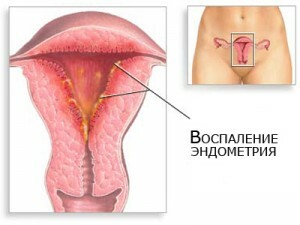
The uterine mucosa has two layers. The upper one suffers from endometritis, when bacteria or viruses enter into its structure, damaging it. Despite the fact that the functional layer of the mucosa is periodically rejected during menstruation, it is very vulnerable. To break the integrity of its structure is also easy as a result of mechanical influence during medical manipulations conducted in the uterine cavity. Contribute to this weak immunity, ignoring the rules of hygiene, including in critical days.
During menstruation with the endometrium, the signs are so obvious that you can not help feeling the changes. They start to appear before the beginning of critical days:
- Pain in the abdomen, similar to the menstrual period;
- Temperature rise up to 38 degrees;
- With excretions from the genital tract, first spreading, then more intense;
- Puffiness and soreness of the uterus during examination.
Influence of endometritis on menstruation
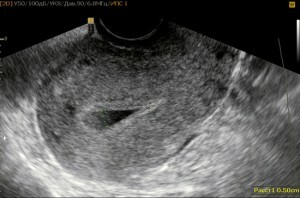
How does endometritis affect menstruation, due to changes in thickness of the mucous membrane, the appearance of pus, clots. Allocations become either more abundant, or, on the contrary, much less. To a great extent, the amount and composition of hormones varies. But they determine the order and the peculiarities of the course of all phases of the menstrual cycle. But the main thing that distinguishes the disease, the receptors of the cells of the mucous membrane of the uterus become less sensitive to the effects of hormones. From here and intermenstrual allocation, and changes of their character in critical days.
What is the monthly for endometrium, depends also on the form of the disease( acute or chronic), the level of lesions of mucous tissues. But in any case, its secretory function is violated, the body begins to produce serous and purulent masses, which give the secretions a specific smell. And in the chronic course of the disease, the color of the menstruation becomes brownish.
Whether there are profuse menstruations in inflammation of the endometrium
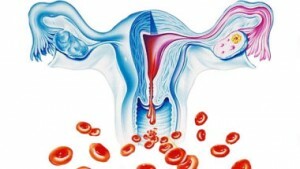
This happens in both acute and chronic forms of the disease. Abundant discharge in critical days with endometritis occurs due to a decrease in the recovery capacity of the basal layer of the uterine mucosa. When the disease occurs, the organ also loses its normal ability to contract smooth muscles. And since the ovaries are affected, the development of the endometrium is slower and it is rejected for a longer time. Menstruation can not stop more than a week. Vessels that penetrate the functional layer of the organ also reduce the ability to "seal", as the ability of platelets to stick together and not allow flow of blood decreases. The combination of all these features makes menstruation more abundant, sometimes requiring emergency care.
Scant allocation
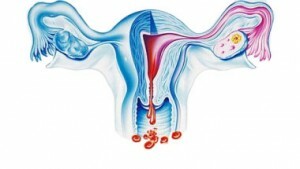
Monthly for chronic endometrium is most often characterized by a decrease in the volume of secretions. Upon examination, it is found that the uterine mucosa is thinned, at whatever stage of the cycle it occurs. The imminent disruption of ovarian function causes a deficiency of progesterone. The volume of other important hormones for critical days is also reduced. The mucous membrane of the uterus can not recover during the first two stages of the cycle. Sometimes it is replaced by a dysfunctional tissue. Thus, prolonged endometritis appears, scanty menstruation is caused by a decrease in the area of the uterine mucosa.
The inflammatory process taking place in it, also causes the appearance of purulent and suprarenal discharge between menstruations, and they can be abundant. The reason for this:
- Incompleteness of the basal layer of the endometrium;
- Reduction of the number of platelets in the blood;
- Violation of the secretory function of the reproductive system.
Scanty menstrual periods with chronic endometrium are combined with cycle disorders, when they have to wait for weeks. However, abundant menstruation also does not guarantee their timely arrival. With the development of the disease, the uterine mucosa can overtake an even heavier lesion with the formation of adhesions on the surface, replacement of the endometrium with a connective or scar tissue. Then menstruation becomes completely impossible.
Treatment of
 Monthly for any form of endometritis should be sought to return to normal. Disease-related all kinds of cycle disorders and peculiarities of regular rejection of the mucous membrane of the uterus are the cause of infertility, which becomes more difficult to cure with the development of the disease.
Monthly for any form of endometritis should be sought to return to normal. Disease-related all kinds of cycle disorders and peculiarities of regular rejection of the mucous membrane of the uterus are the cause of infertility, which becomes more difficult to cure with the development of the disease.
It is possible to get rid of endometritis after a thorough examination and revealing its cause. The treatment is aimed at combating bacteria, restoring the hormonal background and relieving pain.
Antibiotics are used primarily in the treatment of acute disease using:
- Ampicillin. It can be combined with other antimicrobial agents;
- Clindamycin. Apply together with Gentamycin;
- Metronidazole. Assign in combination with Ampicillin;
- Gentamicin. In addition to the already mentioned combination with another drug, it is used simultaneously with Metronidazole and Ampicillin;
- Doxycycline;
- Ertapenem;
- Cefoxytin;
- Cefotetan;
- Cefotaxime;
- Ceftazidime;
- Cephosaline;
- Levofloxacin.

To normalize the monthly during the endometritis, treatment must necessarily include the use of hormonal drugs:
- Dufaston, Utrozhestan. Admission begins from the middle of the cycle until the beginning of the next, if there are abundant menstruation. Preparations contain synthesized progesterone;
- Divigel plus, Femoston. They are appointed to stimulate the growth of the endometrium with scanty menstruation. These are preparations containing estrogens.
For the removal of pain in the endometrium, Analgin, Spasmalgon, No-shpa, and also anti-inflammatory Diclofenac or Ibuprofen are needed. A general strengthening of the body can not do without the use of immunomodulators and vitamins:
- Wobenzima;
- Curantyl;
- Cyclists.
Surgical methods
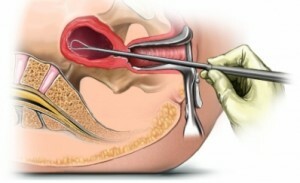
For severe bleeding caused by endometritis, or to eliminate its chronic form, scraping of the uterus is used. If it is done urgently, it is not possible to choose the time for manipulation. The planned operation is carried out at the very end of the cycle, that is, 2-3 days before the start of menstruation. This period is chosen in order to protect the hormonal background and the endometrium from shocks. After all, the latter will soon begin to be rejected.
Physiotherapy
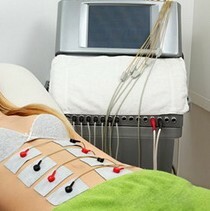
For the treatment of the chronic form of the endometritis, physiotherapy can be a means to put an end to the anguish if the technique is chosen correctly and is combined with medical treatment. To stimulate the growth of the thin endometrium and restore the hormonal balance, use:
- UHF;
- Ultraviolet on the lower part of the body;
- Electrophoresis with calcium chloride, potassium iodide;
- Magnetotherapy and laser to prevent adhesions.
Physiotherapy is allowed to be done during menstruation, if endometritis does not cause excessive discharge, but it must be taken into account that it can intensify the pain syndrome.
Folk remedies for endometritis

Normalization of menstrual diseases with endometritis is possible with the use of medicinal plants. Before starting phytotherapy, it is worth asking what the treating doctor thinks about it. But in any case, consider these methods as the basis of treatment is impossible. They can be used as concomitant antibiotics and hormones. With endometritis, grasses help:
- Lavender, wormwood, cucumber, levzeya, althea root, sweet clover, nettle, blueberry leaves, pine buds. For infusion intended for consumption, take them in equal parts, grind and measure 2 tablespoons.raw materials. The mixture is placed in a thermos, where 600 ml of boiling water is poured. Infusion is ready in 12 hours. He is fed and drunk on a third of a glass three times a day;
- Bearberry, mother-and-stepmother, thyme, mountaineer pochecuynogo, flowers of marigold, chicory, angelica, root of bandana, dandelion. Preparation and use of these herbs is similar to the previous recipe;
- Bay leaf. At 20 grams of raw materials you need 10 liters of water. A bay leaf is placed in the boiling liquid, wait until it cools down to 38 degrees. Then with it you can take a sedentary bath for 10-20 minutes;
- Chamomile, rhodiola rosea root, motherwort, calf's bark, shepherd's bag, cuff leaves, mint, thyme, young woman. All plants are taken equally, crushed. For the present, 2 tablespoons are needed.mixture and 600 ml of boiling water. The grass is placed in a liquid and held for 8-10 hours. Strain, use infusion with a teaspoon of honey for 70 ml 4 times a day.
What happens with menstruation after treatment with
How soon are restored and what are the monthly ones after treatment of endometritis, largely depends on the method and quality of therapy, the age of the woman and the form of the disease.
After scraping, spotting is noticed for 3-10 days. Abundant discharge requires urgent help, since in this case there is a risk of complications. Their absence will force experts to suspect the narrowing of the cervical canal, which must also be treated.
Monthly in endometrium is not the only sign of ailment. But the changes that occur with them dictate the need for a survey. Endometritis, if allowed to develop, can adversely affect not only the well-being, but also the reproductive capabilities of women. And in order not to give him a chance, one should be careful of casual connections, choose contraceptives with a doctor and be examined regularly.
Before using any medications, you should consult a physician specialist. There are contraindications.
